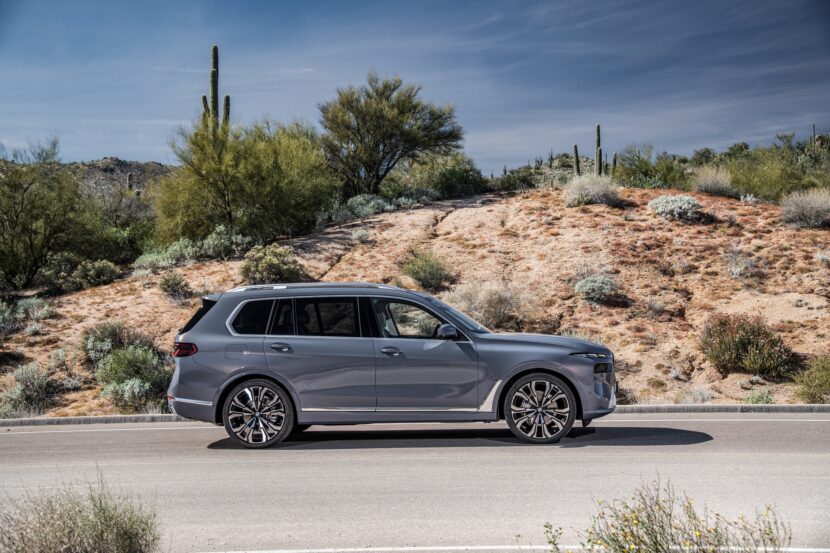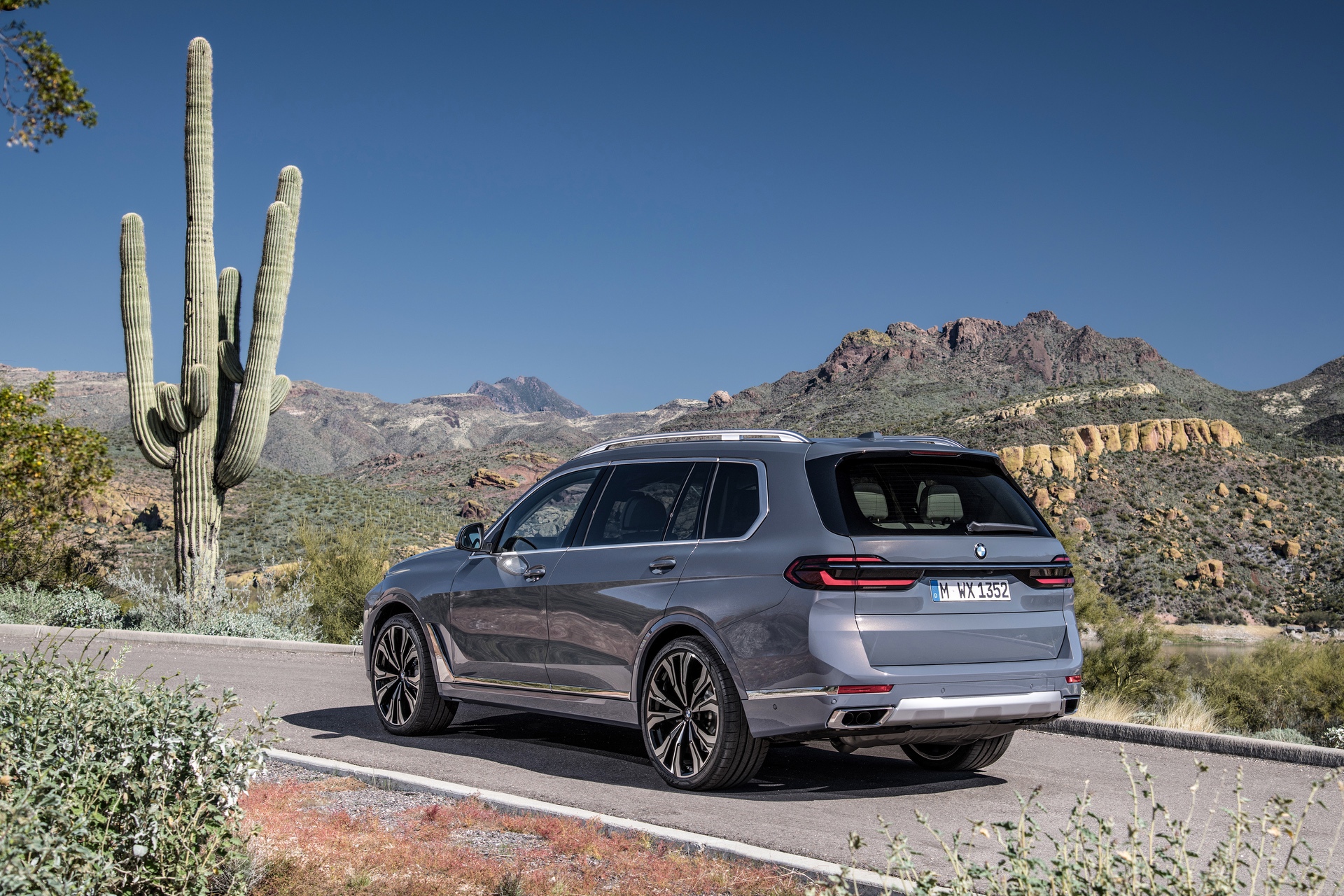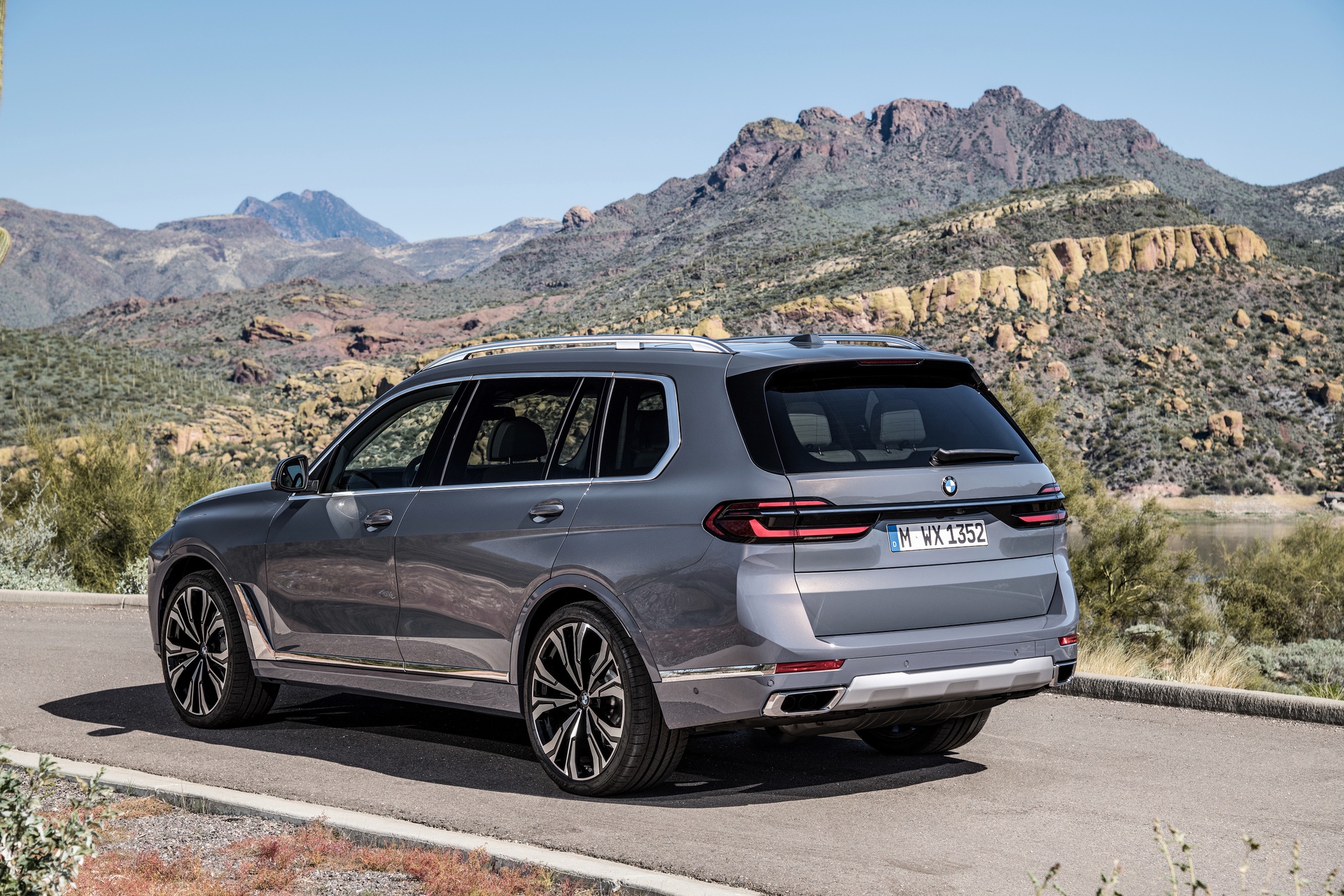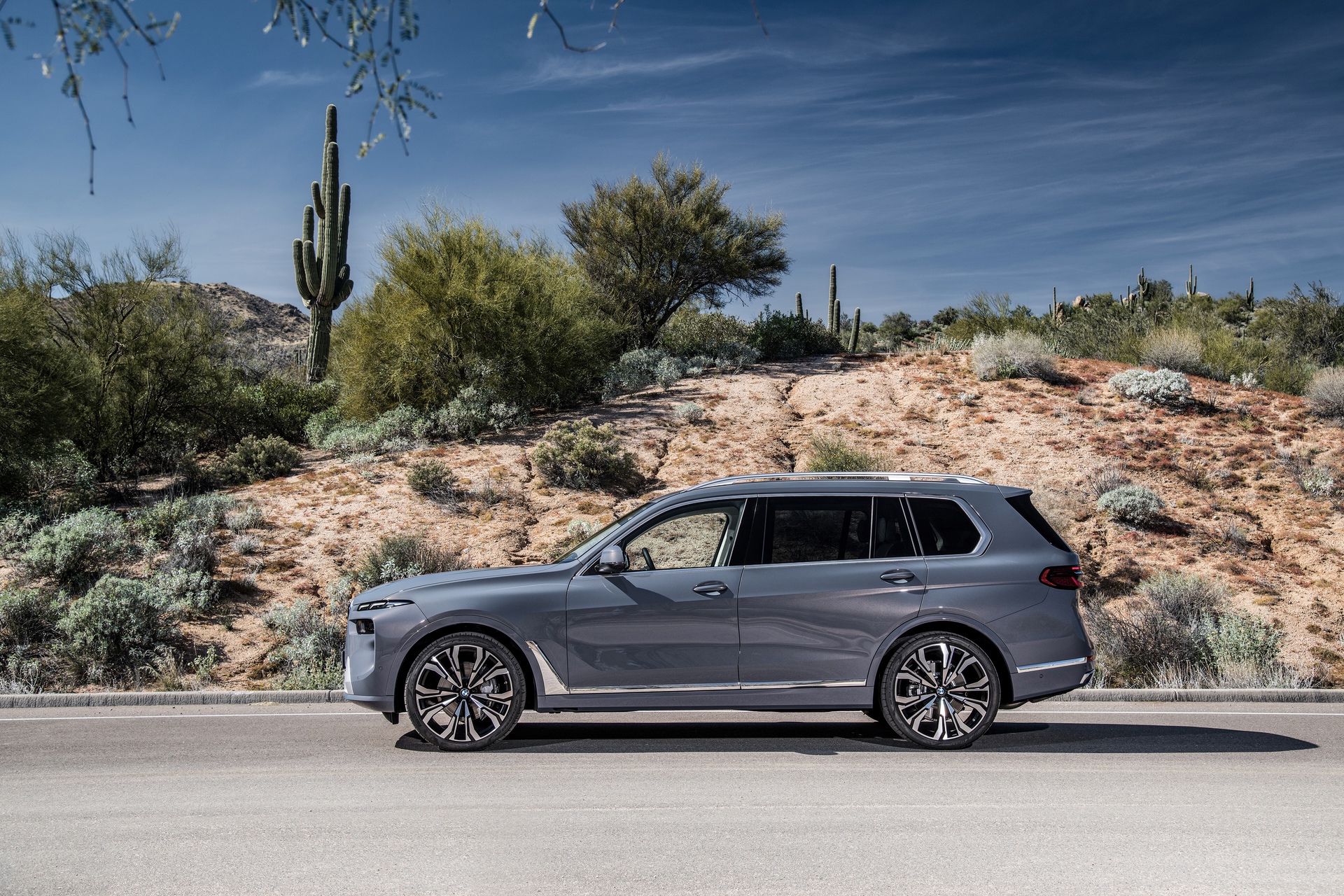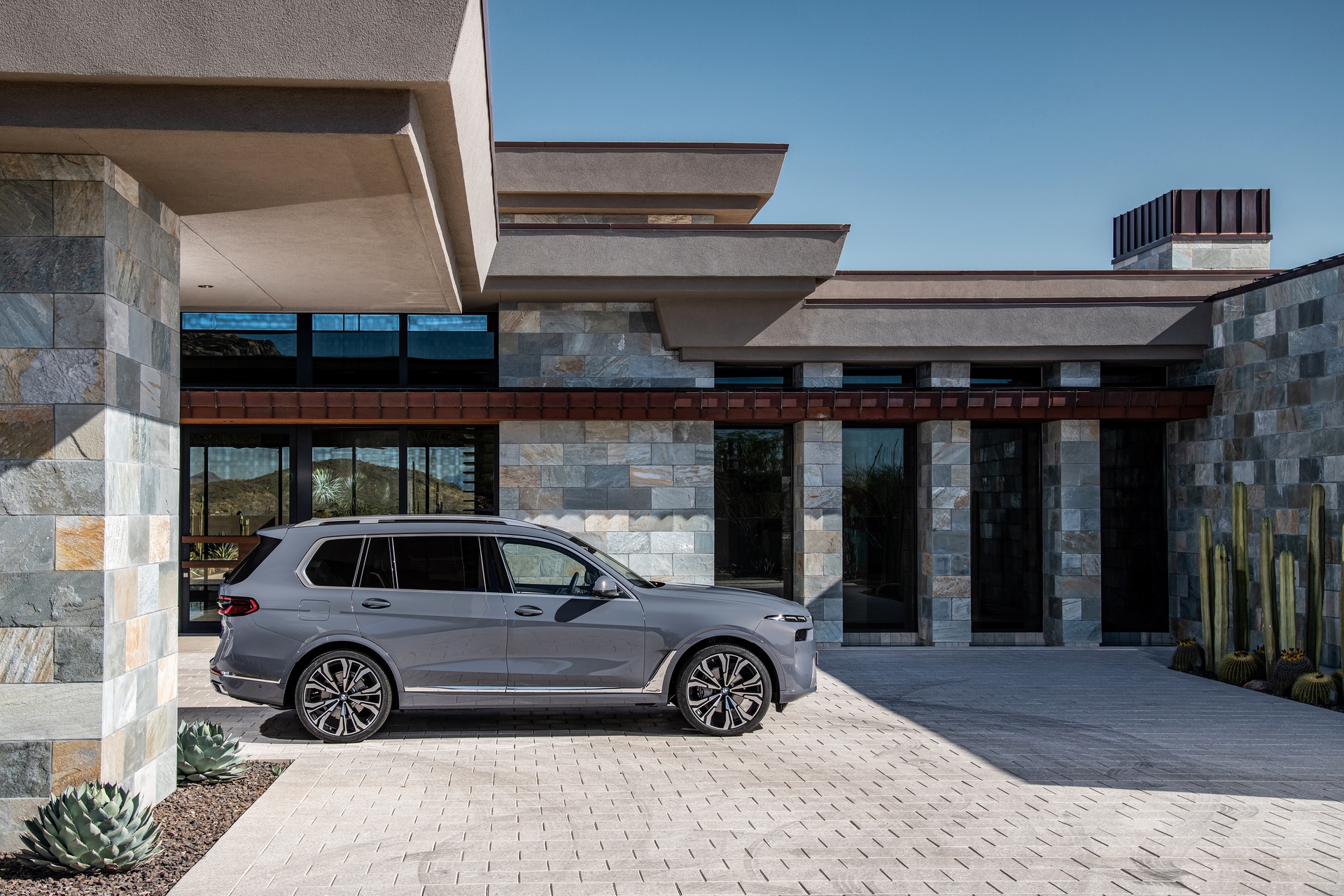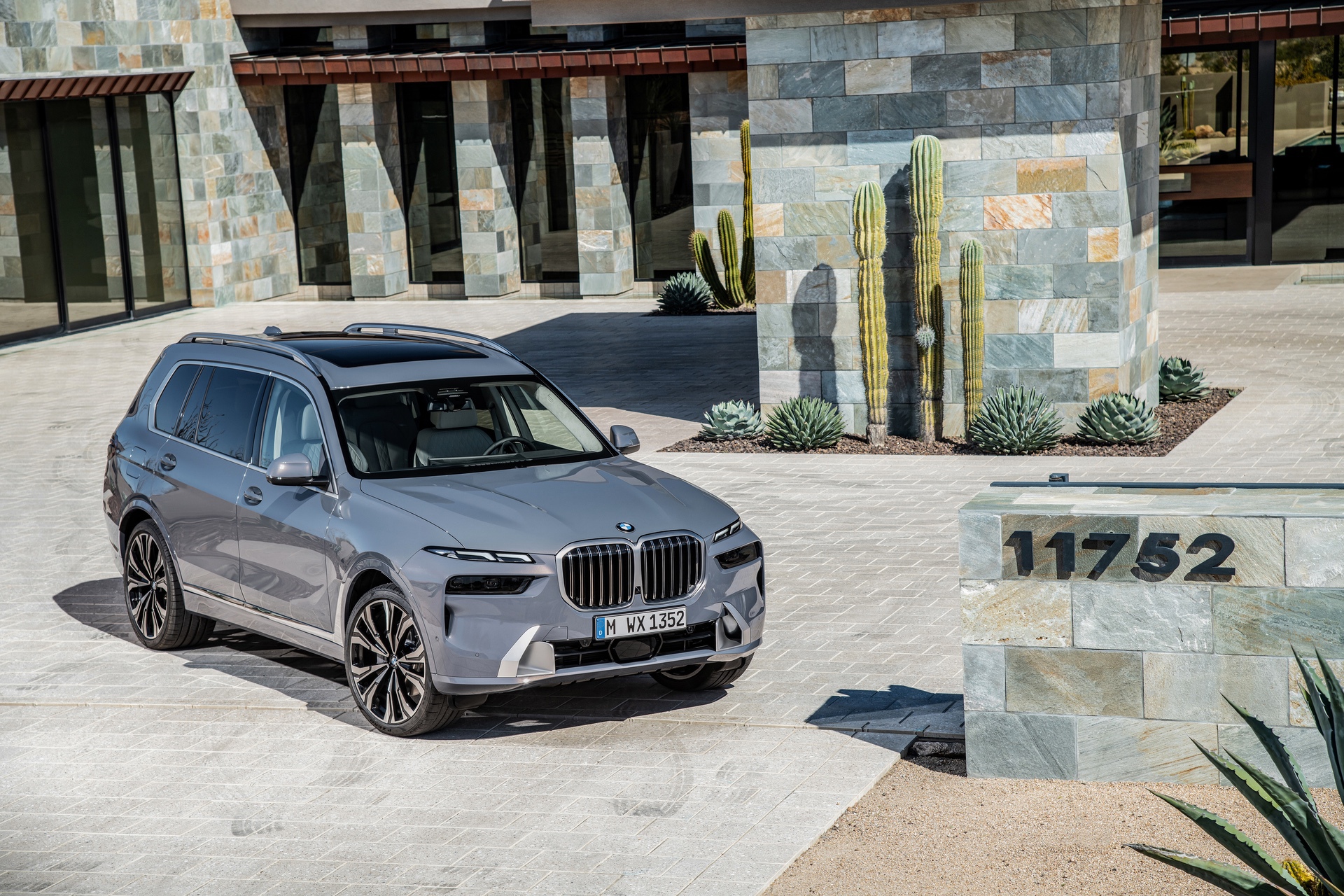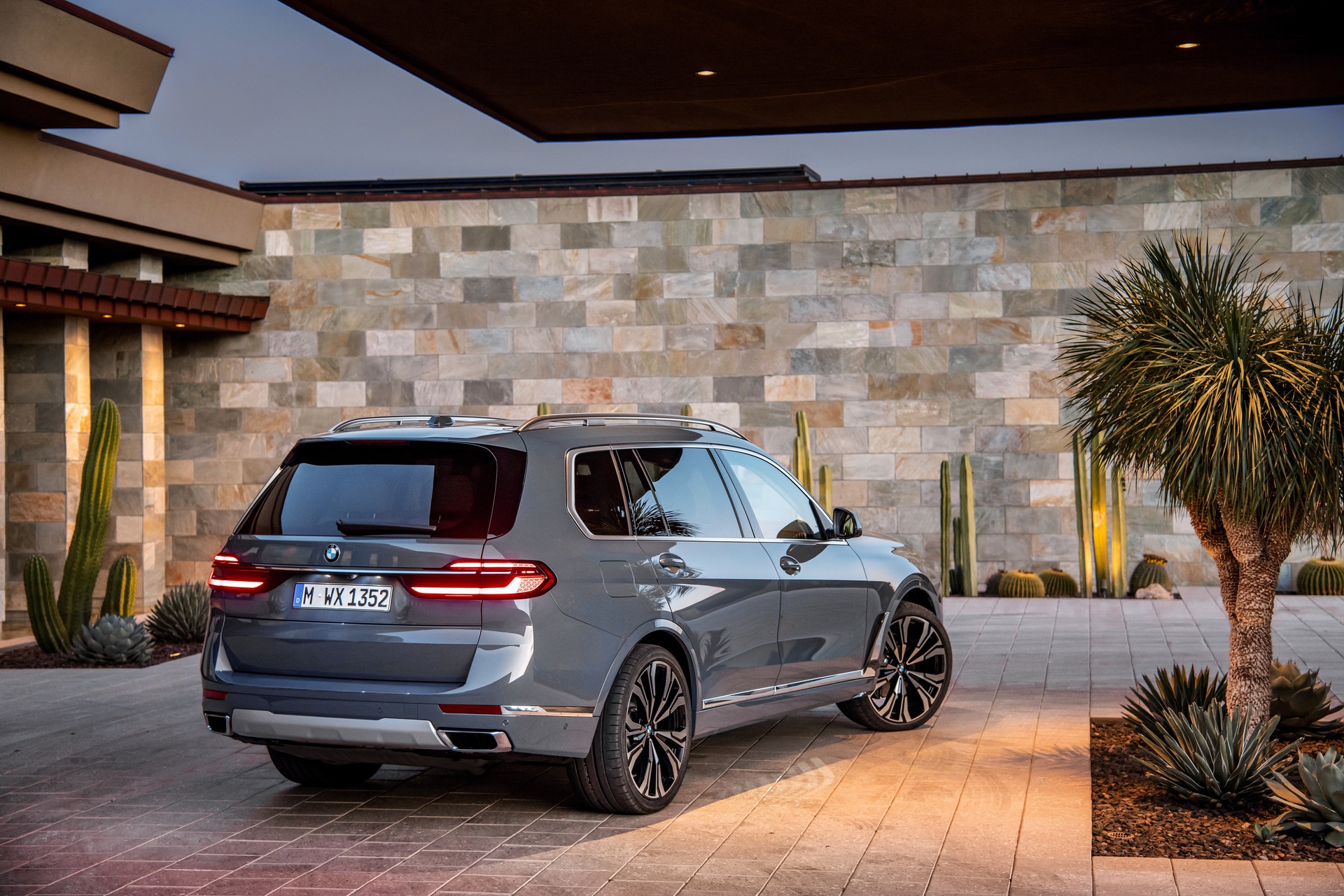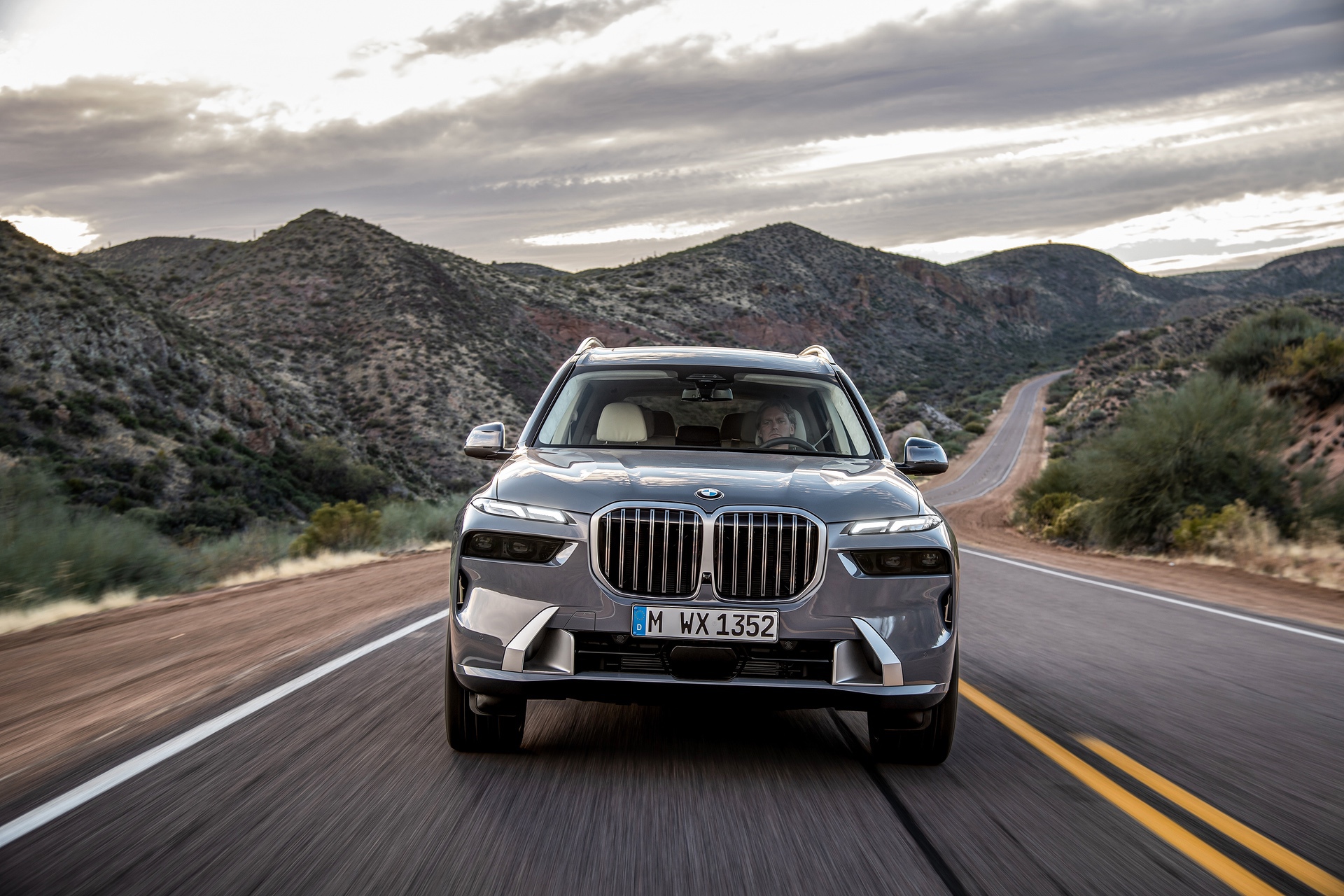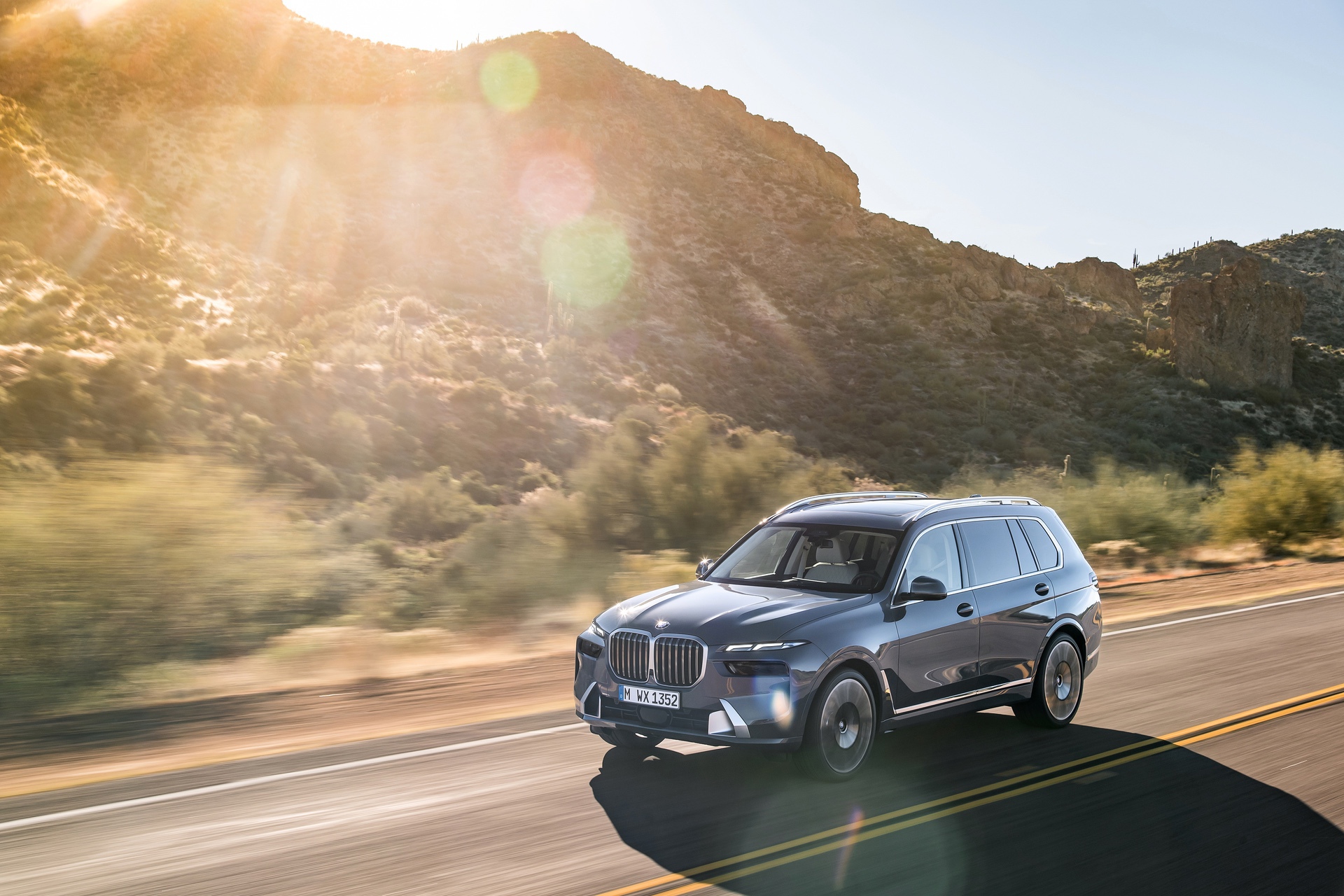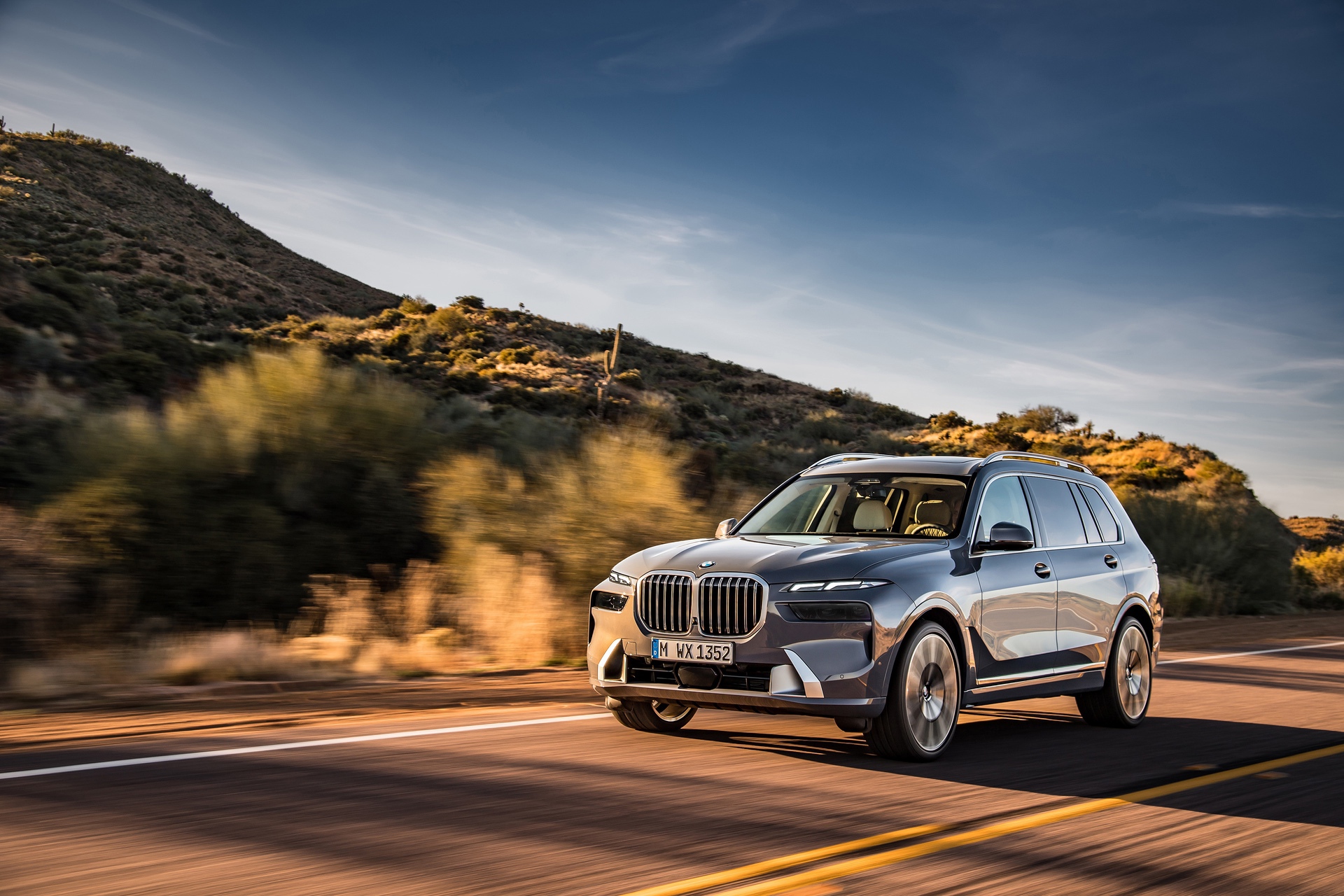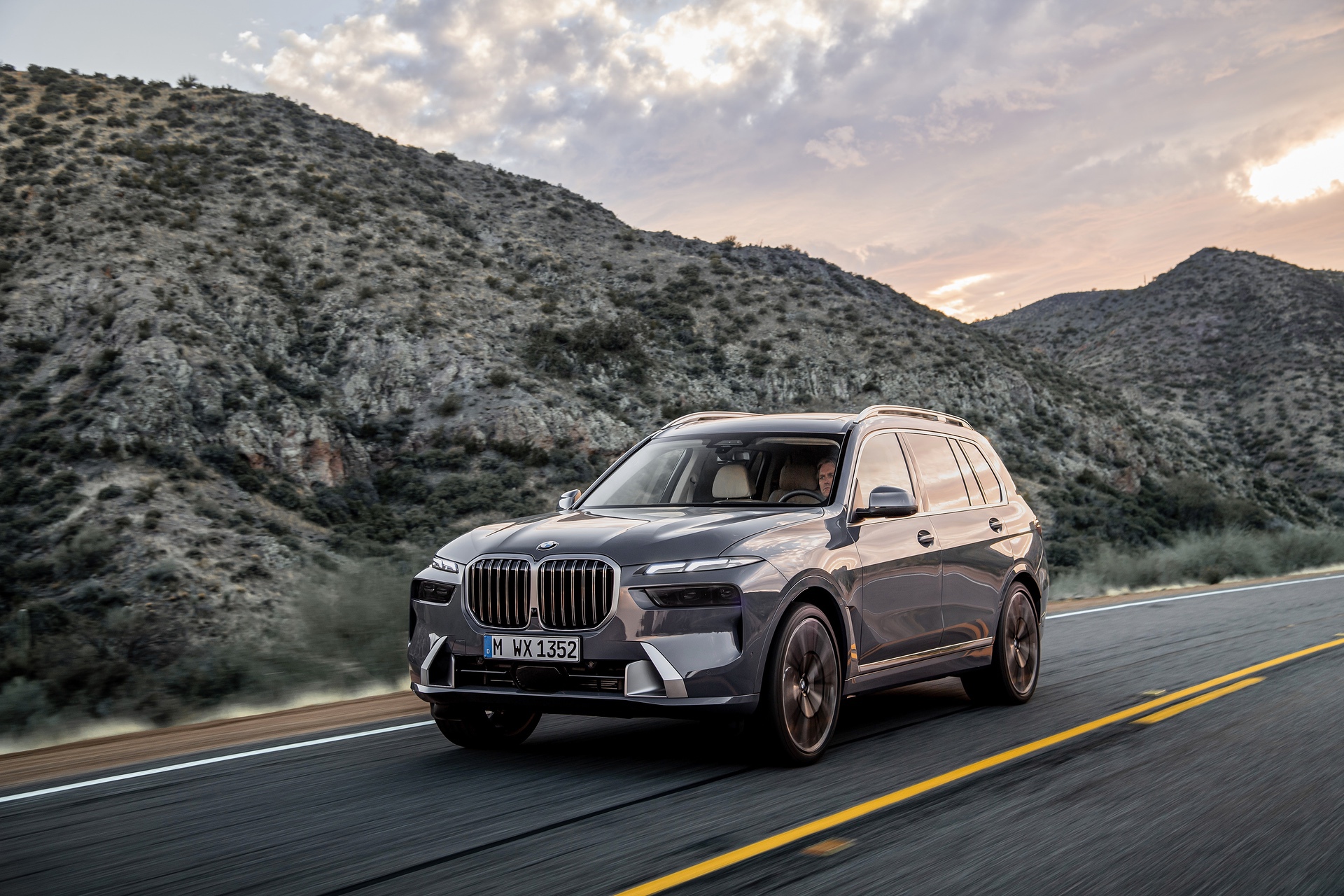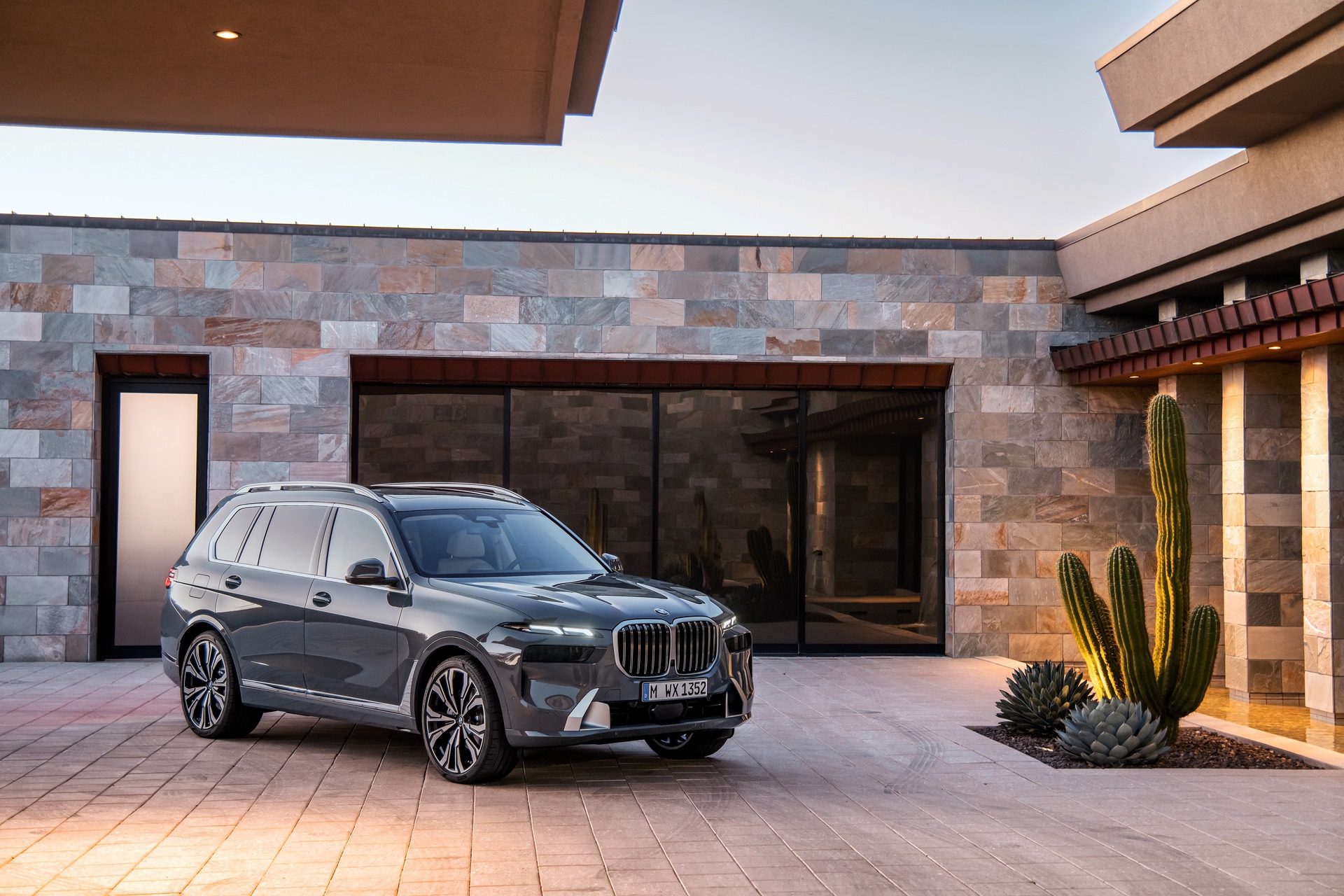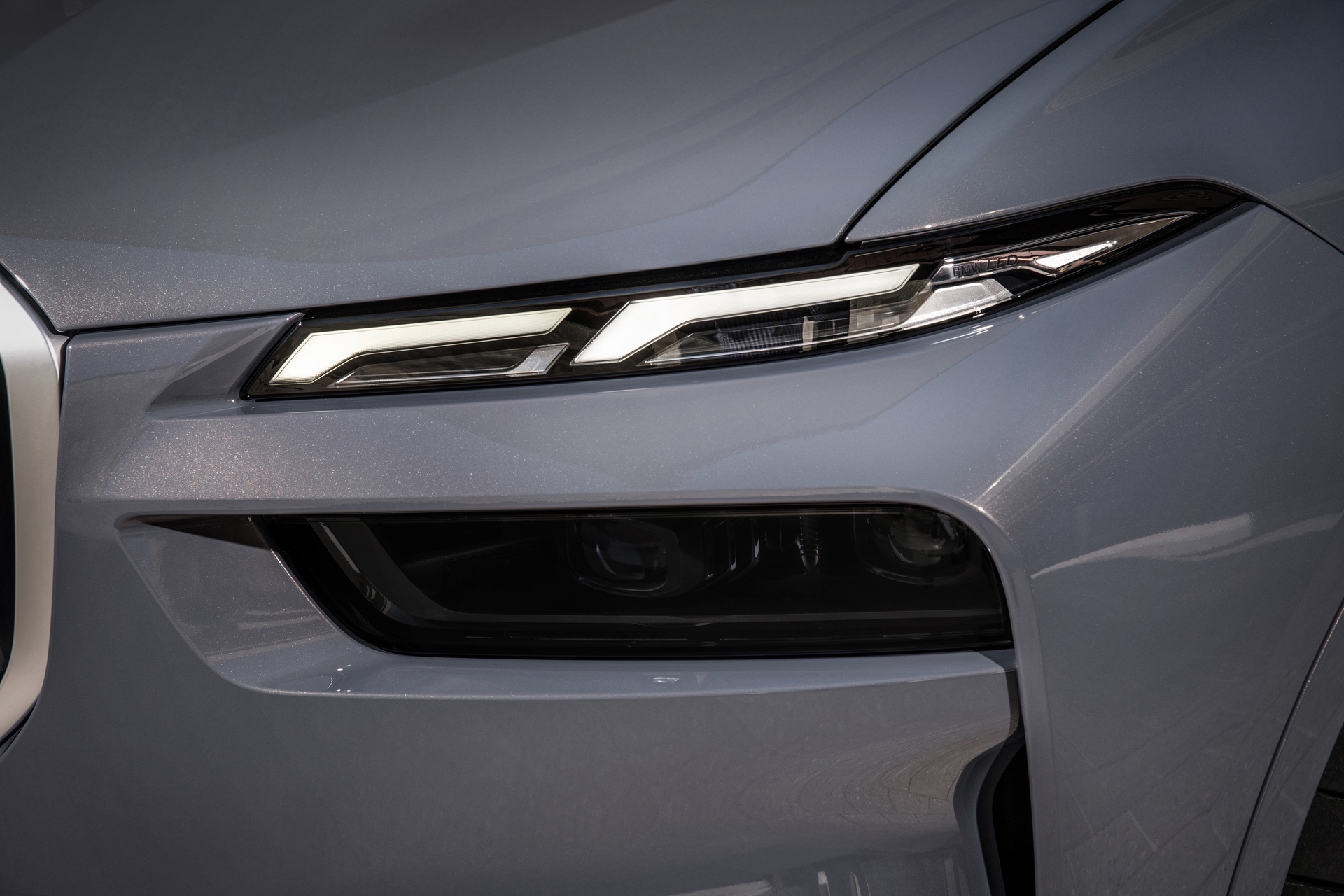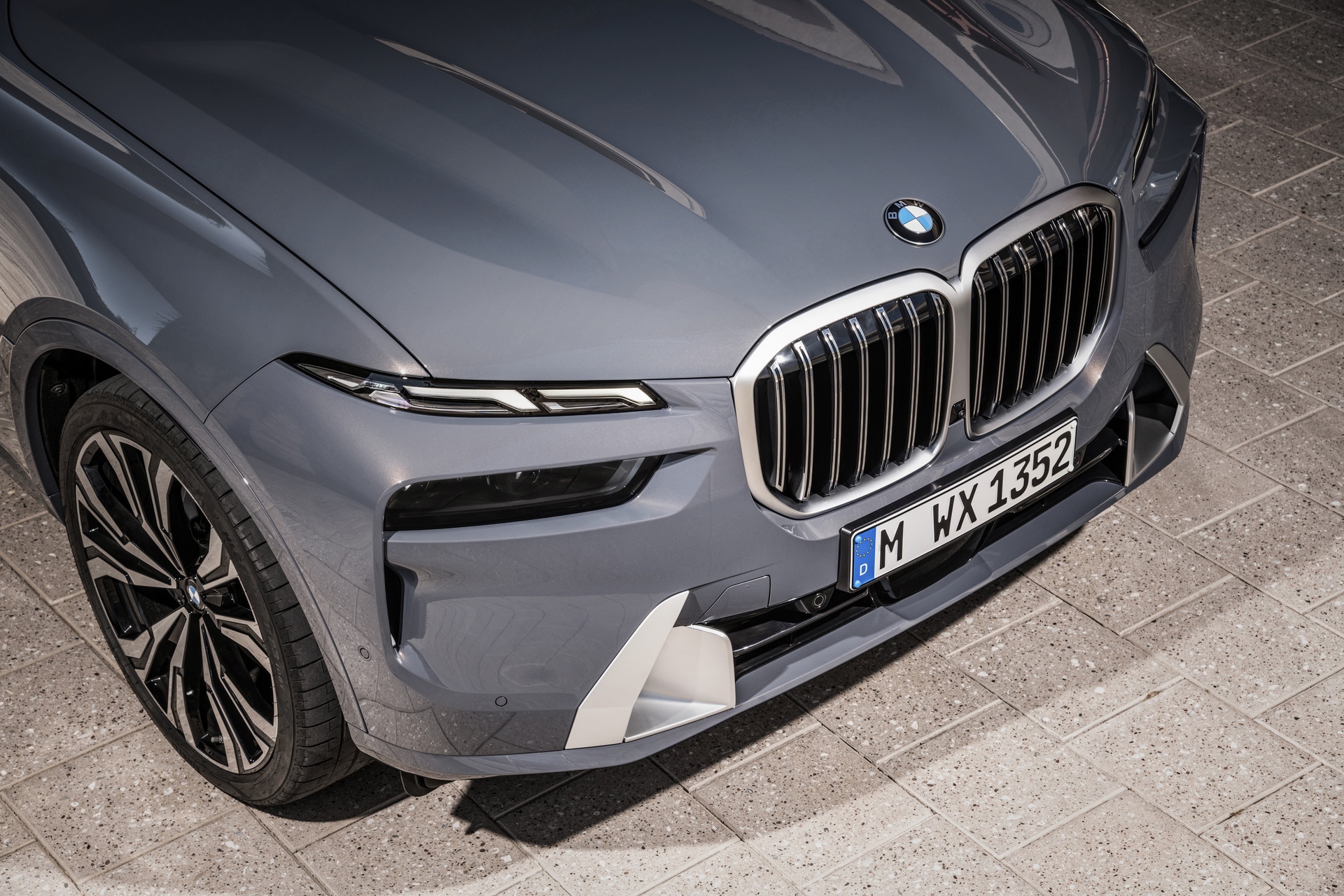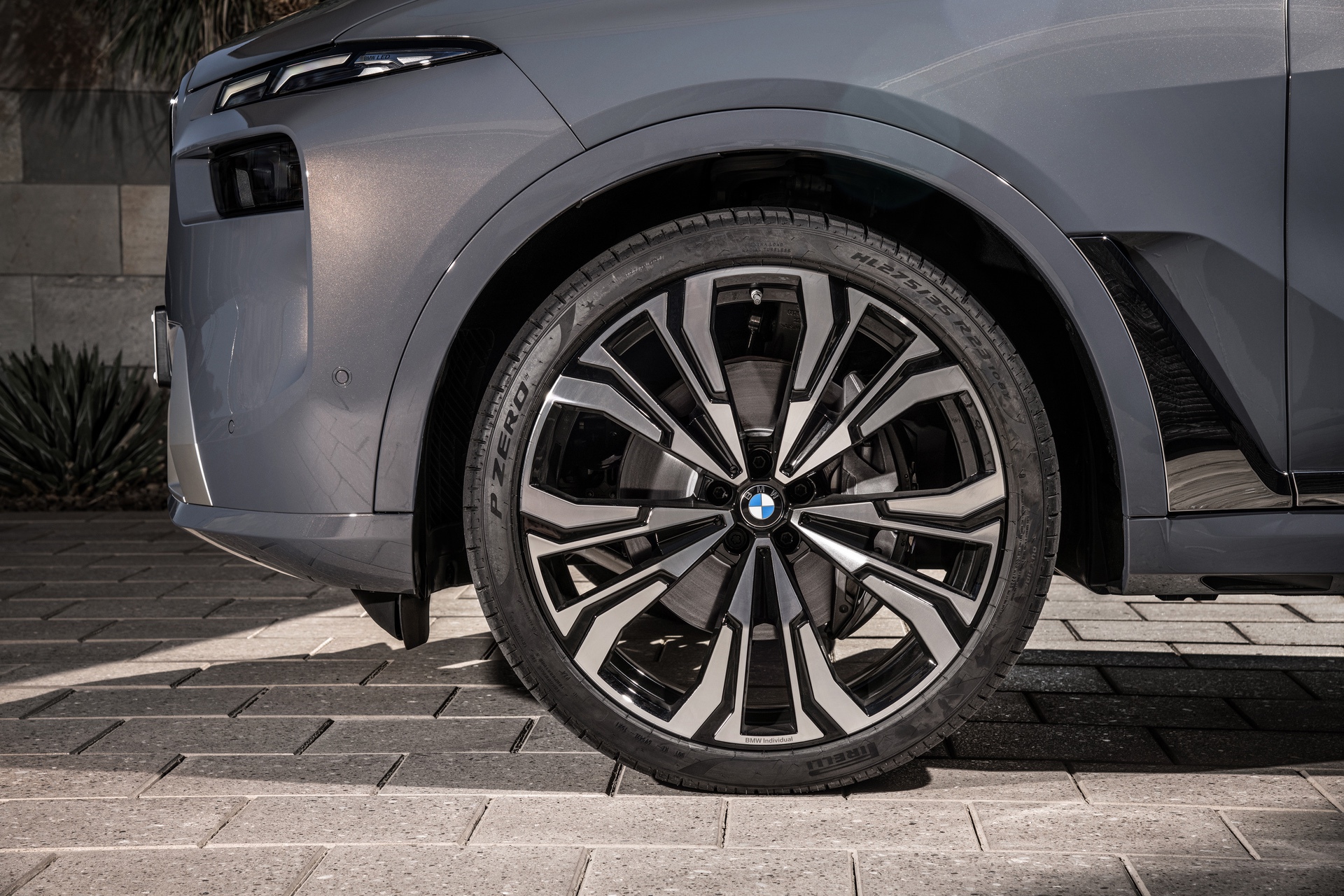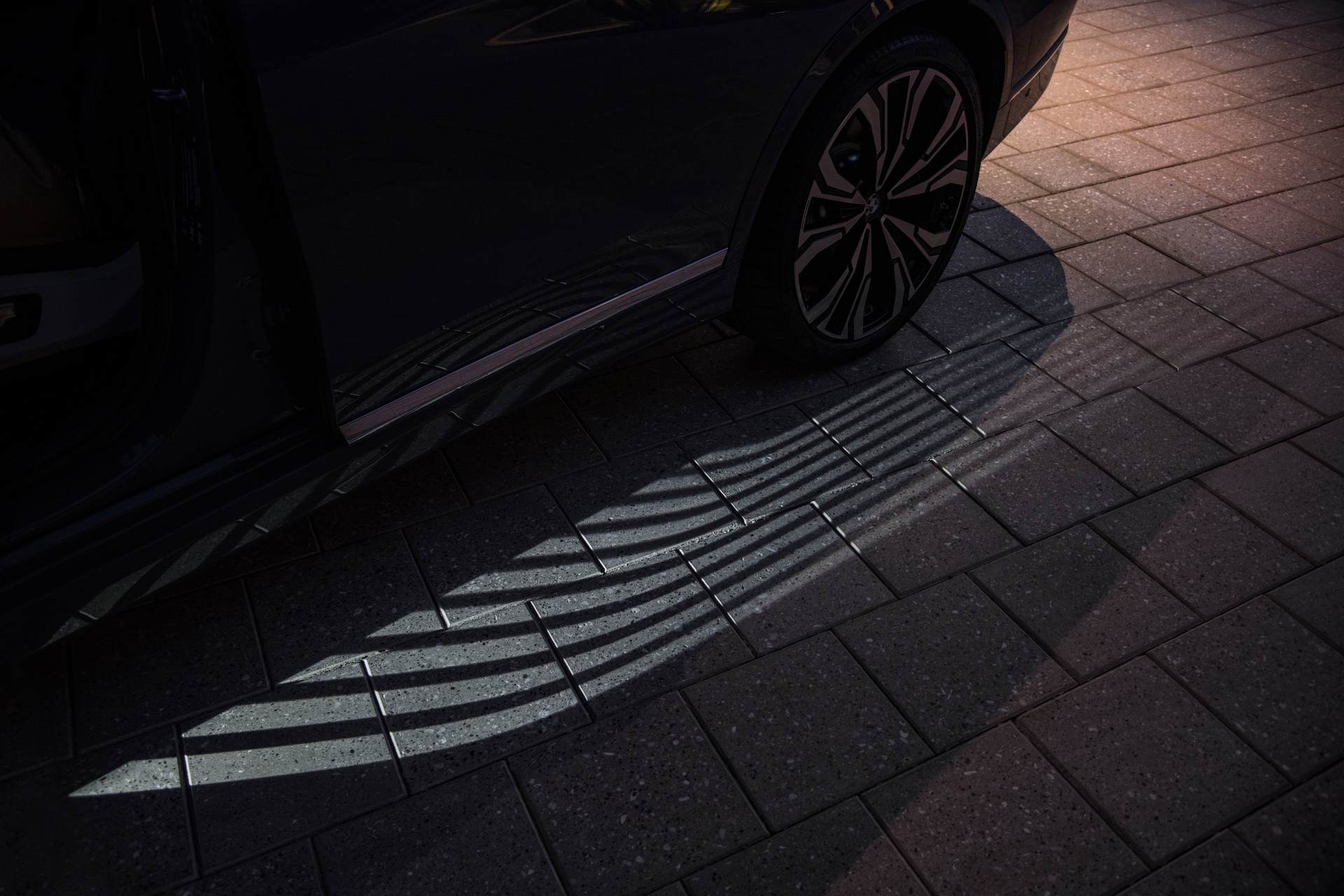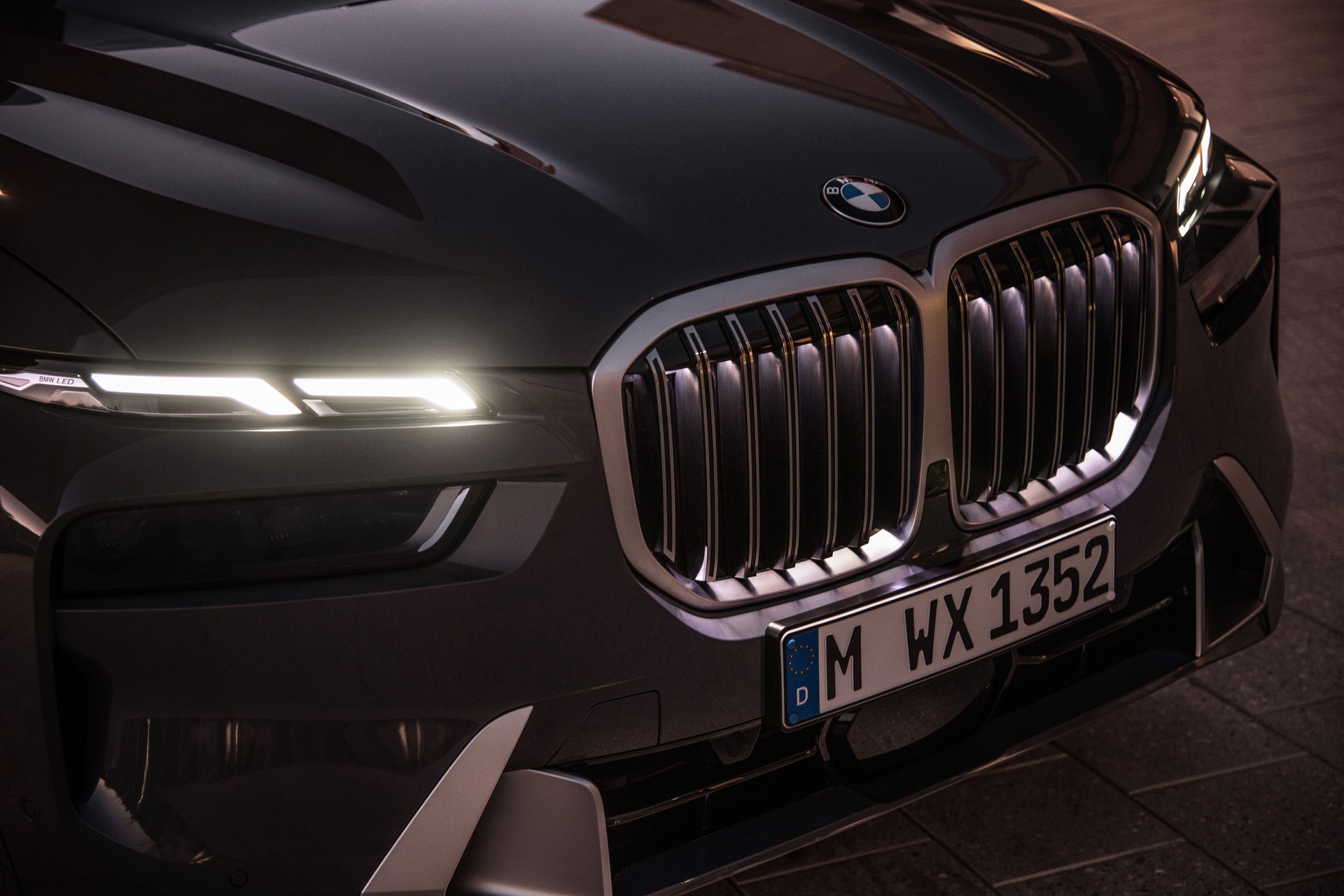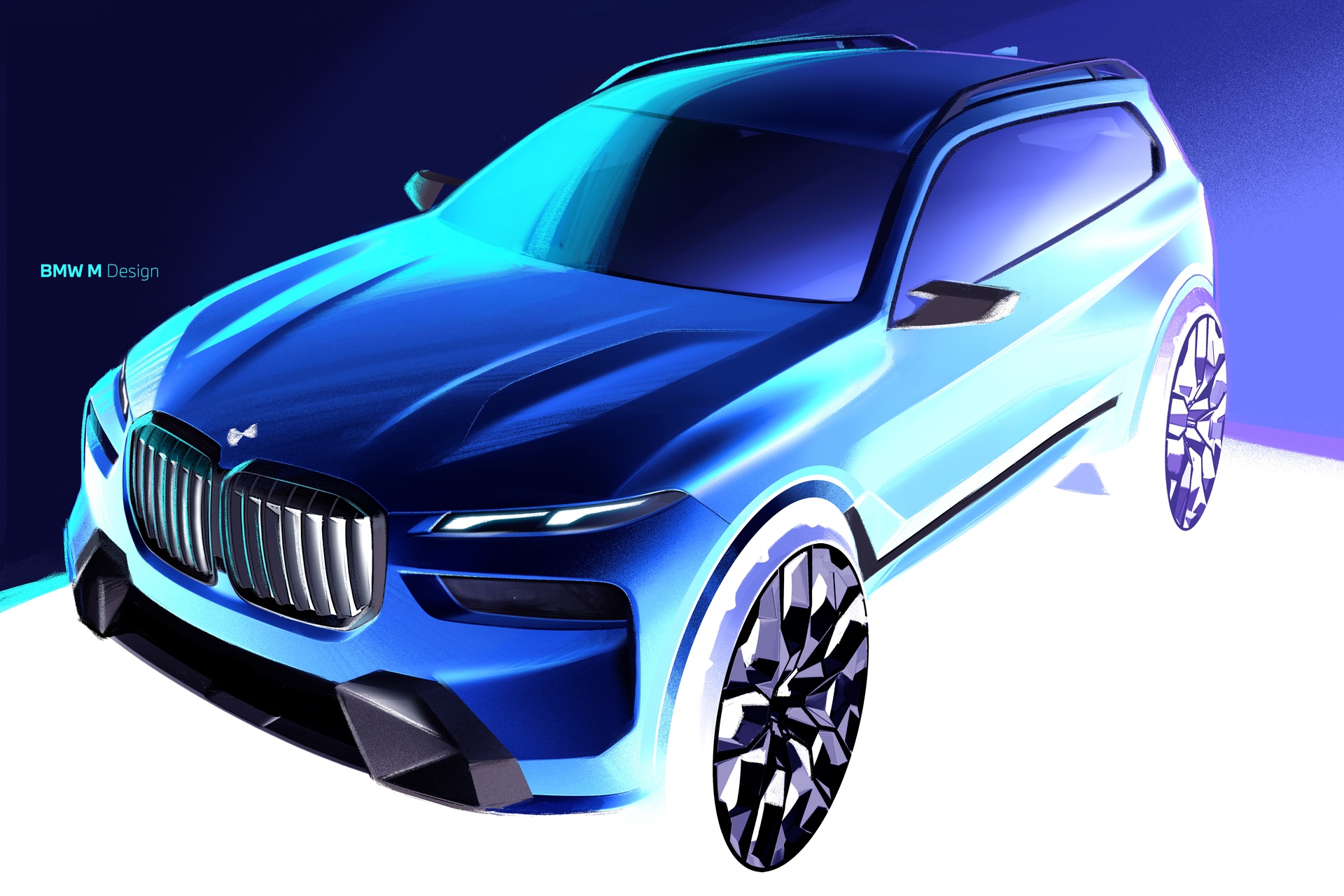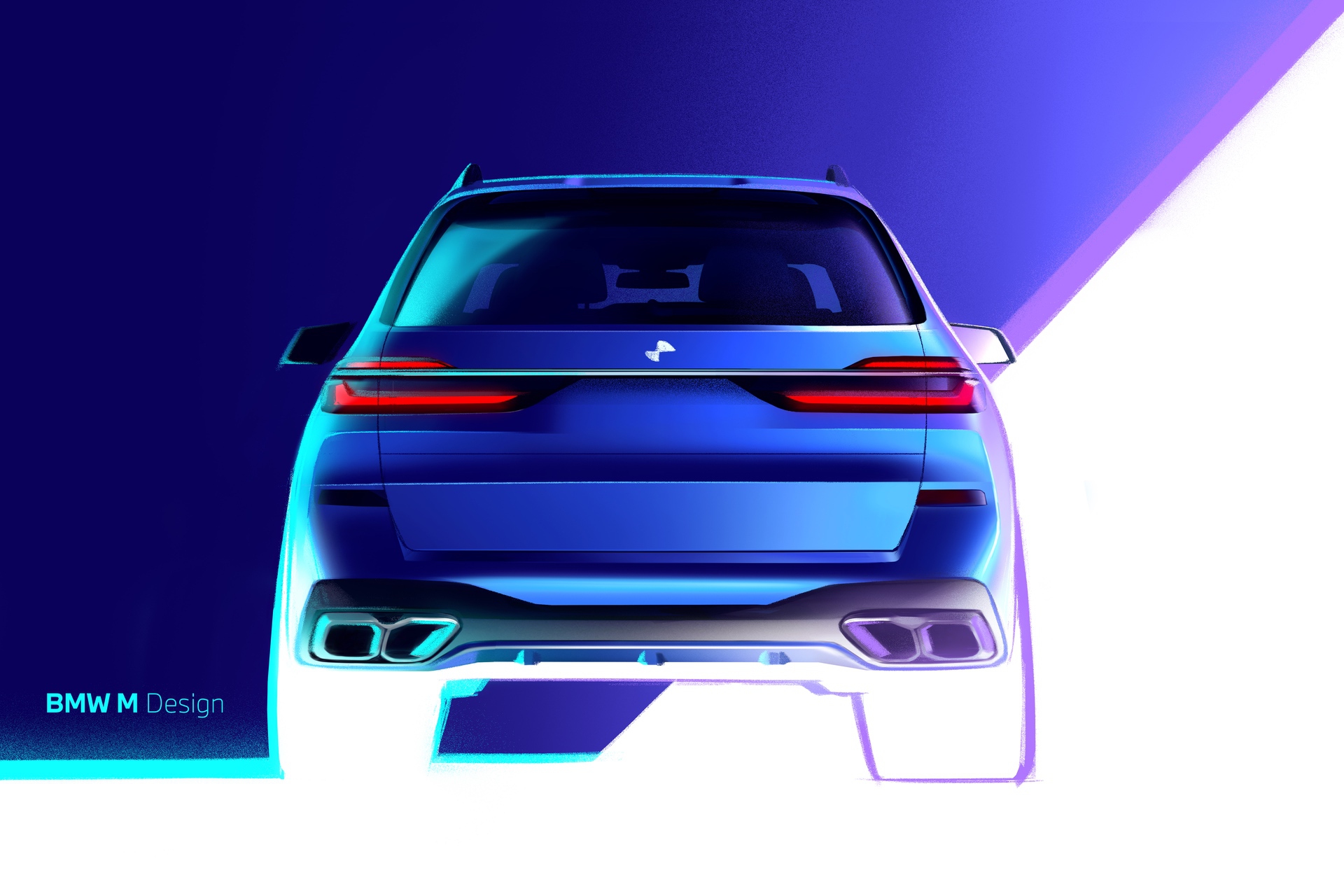Whether you prefer gasoline or diesel engines, BMW has good news to announce about the X7 Facelift. On the gasoline side, there are new inline-six and V8 powertrains, complete with mild-hybrid tech. Where the oil-burner is not frowned upon, the 3.0-liter gets the 48V setup of the gas engines for better efficiency. Other common traits the X7 xDrive40d shares with the others include the xDrive and eight-speed automatic transmission.
In Europe where the X7 xDrive40d will be largely sold, the diesel engine is going to produce 340 hp (250 kW) from 4,400 rpm and 700 Nm (516 lb-ft) from 1,750 rpm. If these output numbers seem familiar, it’s because they perfectly match those of the pre-facelift model. However, the LCI adds an electric motor good for 12 hp (9 kW) and 200 Nm (148 lb-ft). This brings the grand total to 352 hp (259 kW) and as much as 720 Nm (531 lb-ft).
Despite the temporary electric boost, BMW mentions the X7 xDrive40d still needs 6.1 seconds to reach 62 mph (100 km/h). Flat out, its top speed suffers a minor decrease to 151 mph (243 km/h) or 2 km/h less than before. The inline-six diesel now has steel – instead of aluminum – pistons for an improved combustion process. In addition, the common-rail direct injection has solenoid valve injectors and an upgraded oil separator.
The X7 xDrive40d Is Now Cleaner And Makes Slightly More Power
All these tweaks have been done to make the engine less harmful to the environment amid constant pressures from regulators. With the revamped six-cylinder diesel, the X7 xDrive40d will sip as low as 7.6 liters / 100 kilometers in the WLTP combined cycle. That corresponds to CO2 emissions of 200 grams for what is a Euro 6d-compliant engine.
Don’t hold your breath for the return of the X7 M50d since the quad-turbo monster bowed out a couple of years ago with the Final Edition. The B57S was the world’s only diesel engine with four turbochargers, but it was deemed too expensive to update to meet stringent emission regulations.
Source: BMW




